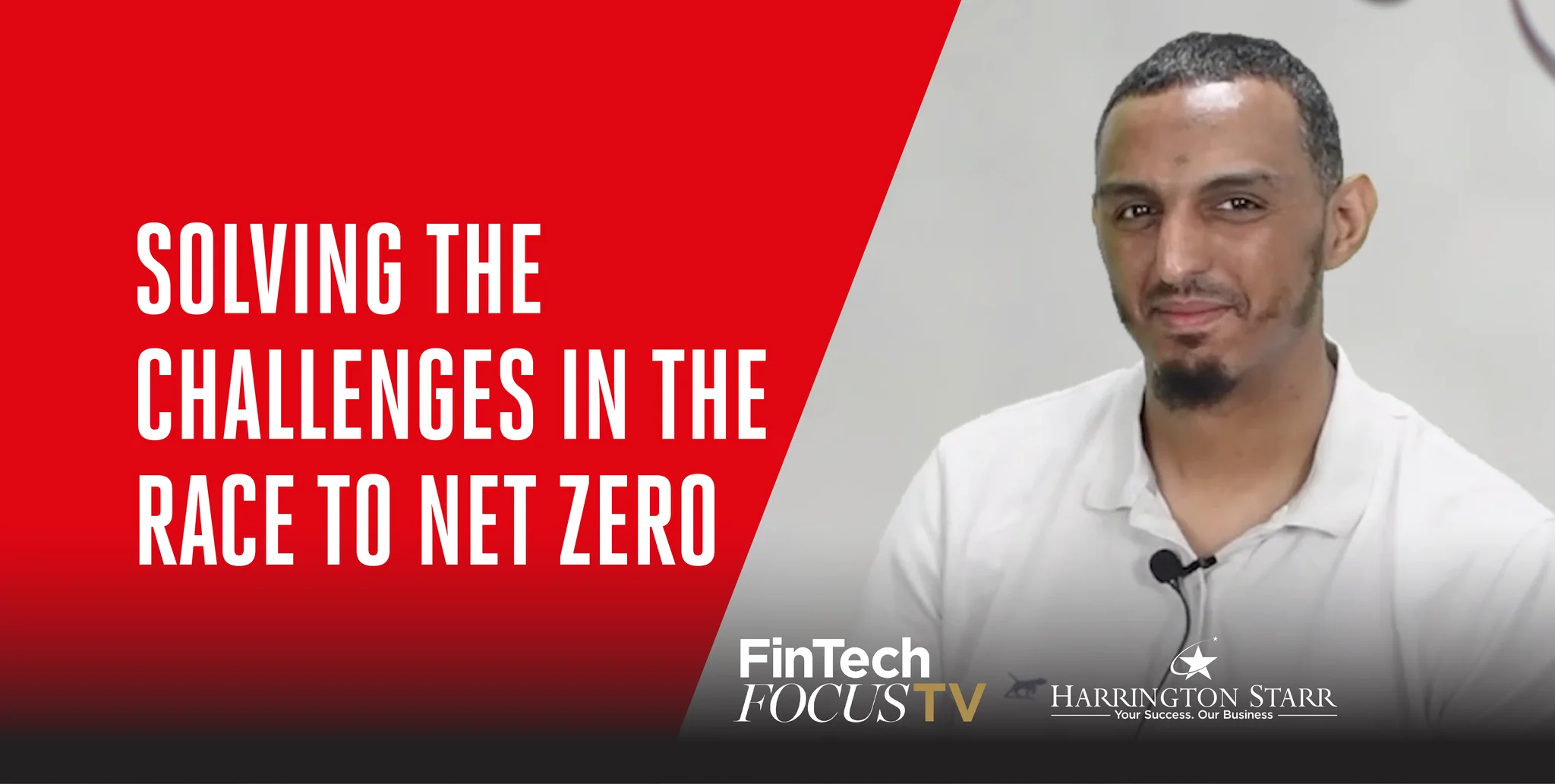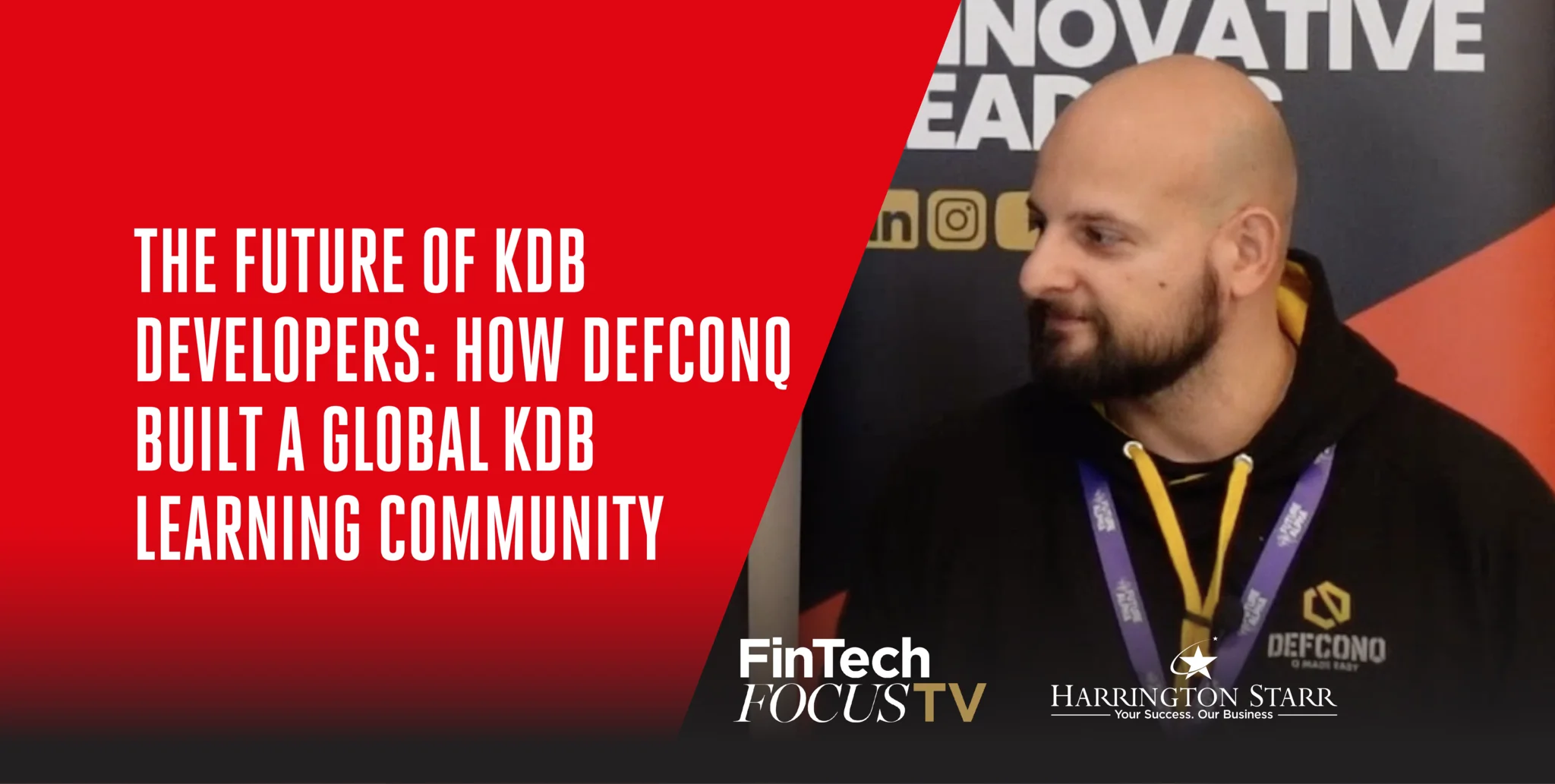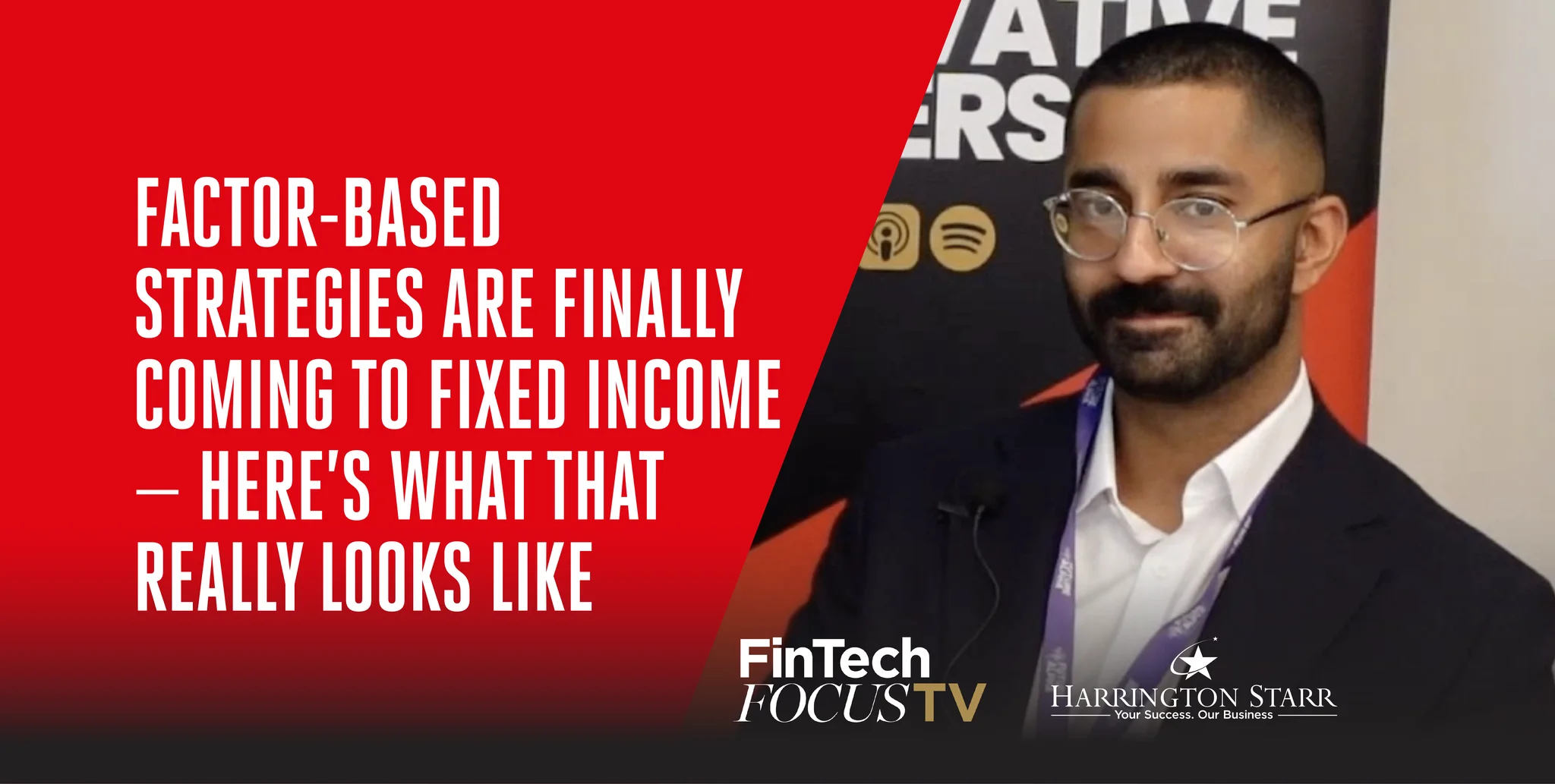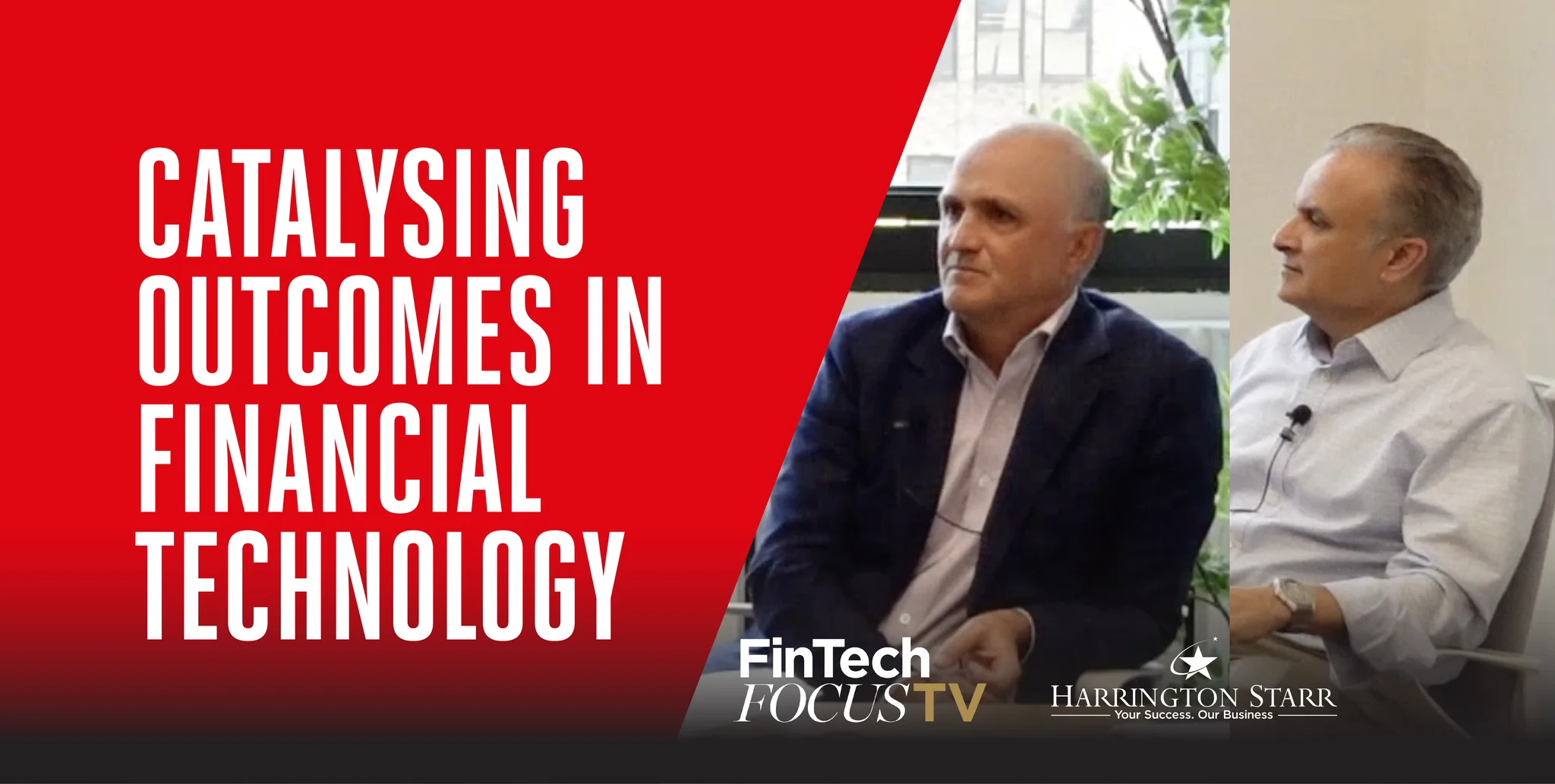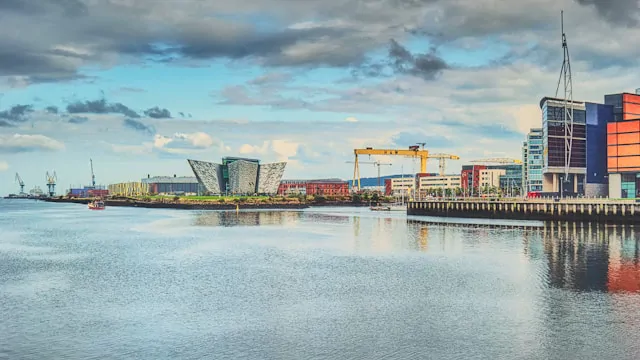Data, Climate, and FinTech Innovation
On this episode of FinTech Focus TV, host Toby welcomes a guest whose work embodies the intersection of FinTech, data science, and climate innovation. Naufal Sarghini, Founder of SM Netzero, joins Toby to discuss his entrepreneurial journey, the challenges of building a sustainability tech business, and how data engineering is playing a vital role in helping companies move towards net zero.
It’s a wide-ranging and insightful discussion that not only highlights the motivations behind SM Netzero but also uncovers the deeper questions about sustainability in business today, from definitions and frameworks to funding and tooling.
From Maths to Meteorology: A Career Built on Data
Naufal introduces himself as born and raised in London, with a strong educational background in mathematics. His analytical mindset was honed through his undergraduate studies, and he later pursued a postgraduate certificate in applied meteorology. This course, he explains, helped deepen his understanding of the weather system and its relevance to human impact on climate. While he reflects that he had hoped it would be more mathematical, it still gave him a meaningful appreciation for the importance of environmental stewardship.
Naufal continued his academic journey with a master’s in applied statistics, which became instrumental in his career. Through this blend of meteorological knowledge and statistical skills, he developed a holistic view of how weather data can be used to model and predict future environmental outcomes. This foundation would prove essential in shaping the technical approach behind SM Netzero.
A Data Engineer’s Foray into FinTech, Media, and Sustainability
Throughout his career, Naufal has worked across multiple sectors, including media, advertising, FinTech, and consulting. However, it was his role at a sustainability software startup that planted the seed for SM Netzero.
At this company, Naufal was involved in building a core feature known as the ingredient-level footprint calculator. In practical terms, this meant helping companies determine the carbon emissions produced by the individual ingredients in their products. Using an example of ketchup and mayonnaise, Naufal explains how businesses needed to understand the environmental cost of producing these items, from raw material to finished product.
It was during one of the startup conferences that the entrepreneurial spark truly took hold. Customers were expressing frustration about the lack of direct integration. They wanted to connect their internal systems directly to the emissions platform, something that was simply not available at the time. That experience revealed a gap in the market and inspired Naufal to do something about it.
The Entrepreneurial Leap: Building SM Netzero
Toby asks a pivotal question: what turned that moment of inspiration into a startup? For Naufal, it was a mix of motivations. He saw a genuine problem in the market and believed he had the tools to fix it. But it was also about lifestyle, creating something that would give him more control over his time and career. Notably, he credits a supportive push from his wife, who urged him to stop sitting on the idea and start building. “If you found a gap in the market,” she said, “why are you sitting down not doing anything about it?”
With a mixture of encouragement and urgency, Naufal made the decision to leave his job to avoid conflicts of interest and focus entirely on SM Netzero. Over the course of eight months, he immersed himself in developing the platform, doing everything from designing features to building infrastructure. During the day, he managed his professional responsibilities. At night, he worked on his startup.
Developing a Platform to Bridge the Net Zero Gap
Toby dives deeper into the platform’s current state. At the time of recording, SM Netzero had a basic application up and running with several key features live. One of the most critical components still in development was the platform’s unique selling point: seamless integration.
According to Naufal, the aim is to allow any business to connect its source system directly to SM Netzero. Once connected, data can be sent in, emissions calculated, and results returned, all in an automated workflow tailored to each company’s requirements. The integration capability allows for both simple and complex workflows depending on business needs.
For companies unable to build direct integrations, the platform offers an alternative: file uploads. Businesses can submit data in a defined format and receive emissions calculations in return. This flexibility means that whether or not a company has technical capabilities in-house, they can still benefit from the platform.
Visualising Impact: Dashboards That Drive Change
A standout feature of SM Netzero is its focus on data visualisation. Toby, coming from a FinTech recruitment background, is quick to praise this. In FinTech, data visualisation can be the bridge between insight and action. Naufal agrees and shares how the dashboard within SM Netzero is designed to help businesses tell their sustainability story.
The dashboard offers year-on-year emissions comparisons, enabling companies to see whether they are making progress. If emissions are increasing, it signals that immediate action is needed. Another feature highlights the “Top 10 Offending Activities”, those business activities responsible for the most emissions. By surfacing this information, the platform helps businesses focus their sustainability efforts where they matter most.
Naufal emphasises that the goal is not to dictate what businesses should do but to give them data-driven guidance. If one activity is particularly harmful, the dashboard makes that clear so the business can investigate and improve.
Understanding Net Zero: A Complex but Critical Target
One of the most enlightening parts of the episode is Naufal’s breakdown of what “net zero” actually means. Drawing from definitions set out by the United Nations, the House of Commons Library, and the World Health Organisation, Naufal highlights the lack of consistency in language. For example, the UN’s definition involves reducing emissions to a small amount that can be absorbed and durably stored, an approach that is technical and hard to memorise. In contrast, the House of Commons and WHO definitions are more straightforward: balancing emissions released with those removed.
This discrepancy, Naufal argues, makes the concept of net zero difficult for businesses to grasp, let alone act upon. Yet, the pressure is mounting. Governments have made net-zero commitments, some of which were initially set for 2030 and later extended to 2050. Companies are being told to align with these goals, but many don’t have the tools or resources to do so effectively.
Why Businesses Are Struggling to Meet Net Zero Goals
Toby asks a vital question: what are the real-world challenges businesses face in getting to net zero? Naufal outlines several.
Firstly, the available tools are often not user-friendly or suited to real business needs. Some platforms are overly complex, while others fail to provide meaningful insights.
Secondly, measuring emissions, particularly Scope 3 emissions, is extremely difficult. These refer to indirect emissions that occur in a company’s supply chain. For instance, if a logistics firm delivers a parcel, and the recipient disposes of the packaging in a harmful way, how does the company track and take responsibility for that? Granular logistics data often clashes with aggregated waste data, making analysis complex.
Thirdly, many businesses simply don’t have sustainability teams. With rising operational costs and reduced funding, companies have cut back on these roles. As a result, they may lack the knowledge to understand regulations or create strategies for emissions reduction.
Supporting Companies Through Automation and AI
This is where SM Netzero comes in. The platform is designed not just to offer insights, but to automate the entire emissions tracking process. Naufal explains that automation is critical, especially for companies with limited technical capacity.
SM Netzero is planning to launch an AI assistant that will guide users through building their own integration workflows. This allows companies to establish sophisticated processes without the need for in-house software developers or data scientists.
As Toby observes, this kind of AI-driven tool becomes almost like a member of the team, supporting efficiency, reducing cost, and delivering results without the overhead of additional staff. It’s a powerful response to the sustainability resource gap that many organisations are facing.
A Purpose-Led FinTech Venture with Global Relevance
While SM Netzero is a commercial venture, Naufal makes it clear that its purpose is deeply personal. He wants to build something that contributes to the global movement to reduce emissions and shift away from fossil fuels. “It’s not just about me pushing a product,” he says. “It’s for everyone.”
This approach extends to customer feedback. Naufal is keen to offer 30-day free trials and encourages businesses to share candid opinions, positive or negative. It’s a collaborative, co-creation model that prioritises continuous improvement.
Toby praises this mindset, noting that the best startups are the ones open to listening. Rather than evangelise to customers, Naufal wants to build something with them. In FinTech recruitment, Harrington Starr often champions this approach, recruiting leaders who understand that solving real problems begins with real conversations.
What’s Next for SM Netzero?
Toby asks Naufal to share his long-term vision. The goal is for SM Netzero to become a global leader in sustainability software. Naufal envisions sustainability becoming as central to business operations as finance or HR, something embedded in daily decision-making.
He also emphasises the importance of regulatory alignment. SM Netzero will calculate emissions in accordance with local laws and frameworks, giving companies clarity and confidence in their compliance.
At its core, the platform aims to be a competitive advantage. As Toby notes, great software gives businesses an “unfair advantage” over their competition. SM Netzero does that by enabling faster, more accurate, and more cost-effective sustainability reporting. From a FinTech perspective, that’s exactly the kind of edge companies are looking for.
Final Reflections from a First-Time Founder
The episode closes with a moment of reflection. Naufal admits that launching SM Netzero has been the steepest learning curve of his life, but also the most rewarding. He has gained technical and business knowledge that he never imagined he would need.
From infrastructure and front-end development to compliance and product strategy, Naufal has done it all. “I’ve never learnt so much in a very long time,” he says. Toby sees this as a sign of the passion and determination behind the venture, something that’s clearly visible throughout the episode.
Though still early in its journey, SM Netzero has already launched, is offering trials, and is in conversations with prospective clients. Naufal is open to being contacted via the SM Netzero website, email, or LinkedIn. His message is clear: any business, whether in logistics, retail, or finance, that needs to calculate emissions is welcome to get in touch.
